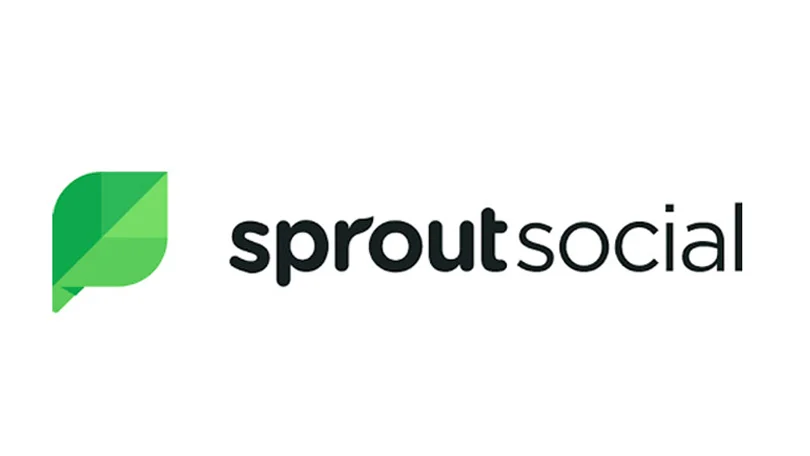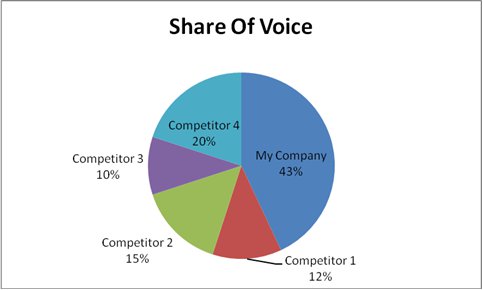As a marketer, share of voice is one of the metrics you should pay attention to when gauging your brand’s performance and progress. Early in my career, I worked on a PR campaign for a tech startup. Despite our hard work, our brand seemed to be lost among so many competitors. We started focusing on our share of voice and then began to see significant changes. By tracking and improving our SOV, we managed to create a significant presence in the market, which led to increased visibility and, ultimately, more success.
Share of voice (SOV) is a metric that illustrates your place in the market, making it a great place to start. It puts all of your other social media metrics into context so you can understand where your brand stands. Here, we’ll study this metric in-depth and show you ways to increase your share of voice on social media and other channels.
Key Points
- Share of Voice (SOV) refers to the percentage of total market communication and conversation that a brand owns compared to its competitors.
- Share of voice (SOV) includes advertising, PR and media coverage, social media, and search engine SOV.
- You can calculate the share of voice using the formula: Share of voice = Your brand metrics / Total market metrics
- You can also measure your share of voice using tools like Google Ads, Brandwatch, Hootsuite, Talkwalker, Mention, Sprout Social, Meltwater, BuzzSumo, etc.
- You can increase your share of voice using strategies like social media engagement, creating valuable content, enhancing your PR campaigns, SEO optimization, etc.
What is Share of Voice?
Share of Voice (SOV) refers to the percentage of total market communication and conversation that a brand owns compared to its competitors. It’s a measure of a brand’s presence within a specific channel or market and can include metrics from advertising, PR coverage, social media mentions, and search engine visibility. Essentially, SOV indicates how much of the “buzz” in your industry is about your brand.
By knowing your SOV, your brand better understands the challenges and your current position in the market, giving you more insight into how to achieve growth and captivate users.
Components of Share of Voice

There are some factors you should note when calculating your share of voice:
#1. Advertising Share of Voice
This component measures the proportion of your brand’s advertising presence relative to your competitors. When it comes to advertising, it’s important to find your share of voice to see how much ad space you’re taking up compared to the competition.
To find this, you’ll divide how well you did in a paid advertising metric (such as impression shares), by the total number in the industry.
For PPC ads, you can look at impression shares, which represent the number of times your ads were shown to users compared to the number of times your ads could have been shown, based on your keyword and campaign settings. If you’re using Google Ads, you can find “Impression Share” in your account, go to campaigns, click the column icon, and select “modify.” From there, click “competitor metrics” and add impression share columns by checking the boxes next to their names. Then click “apply,” and the impressions data should appear in your table.
Share of voice is important in advertising because it helps you budget, measure campaign effectiveness, and gain a competitive advantage. When I was managing campaigns, I noticed that increasing our advertising spend in targeted channels significantly boosted our SOV.
#2. PR and Media Coverage Share of Voice
This looks at the volume and quality of media coverage your brand receives. Use this information to help you identify writers or outlets interested in covering your brand or relevant topics, learn about industry trends, and evaluate competitors’ performance. Using this information can assist your PR staff in simplifying their research and gaining valuable industry insight.
Read Also: Media Relations: Everything You Should Know (Updated)
#3. Social Media Share of Voice
This helps you measure how much of the online conversation about your industry, niche, or topic is related to your brand, compared to your competitors.
Statista reports that in 2021, there were 295 million social media users in the U.S. alone. With even more users worldwide, you’ll want to tap into their conversations and use that data to improve your marketing strategy. With social media, you can measure brand mentions, hashtags, reach, impressions, or even sentiment. You can use a social media tool to measure these brand mentions. Calculate yours and your competitors’, then add those numbers together and divide your mentions by the total.
Share of voice is important in social media because it will help you determine which competitors are getting mentioned more. This will allow you to analyze what you do against what they do, identifying gaps in your strategy. Ask yourself what platforms are working for your competitors, which influencers talk about them, and where they’re the most popular, and use this information to level up your branding strategy.
Read Also: Impressions vs Reach in Different Channels Explained!
#4. Search Engine Share of Voice
This involves analyzing your brand’s visibility in search engine results. To measure your brand’s share of voice in organic search, you’ll need to look at your brand occurrence in search results pages (SERPS). Typically, the number of impressions is used to measure this, but you could also use clicks. You can utilize several tools to pull this information. Performing an SEO share of voice analysis will help you determine which websites rank most for a set of keywords.
Once you’ve decided on a list of keywords or topics you’d like to focus on, pop them into a keyword research tool. Pull the 1st page (SERP) rankings from the results for each topic. From there, you can export this data into a table or chart to get a better visual of the data.
How to Measure Share of Voice
You can calculate the share of voice using this formula:
Share of voice = Your brand metrics / Total market metrics
The same share of voice formula applies across all marketing channels with slight variations on the specific metrics. For example, while you track brand mentions for social SOV, link clicks will determine organic search SOV.
Now it’s easier than ever to calculate the share of voice with tools that can do the hard work for you and give you pretty precise results. I’ve worked with some of these tools, and here are the best I’ll recommend:
Tools To Measure Share Of Voice
#1. Google Ads

Google Ads is the go-to tool for measuring the PPC share of voice. To find your PPC share of voice, use their impression share metric. Conveniently, Google’s tools work together, so if you already have Search Console, you could link it to your Google Ads account.
Google Ads is so widely used, that it’s often already a component of marketing campaigns. Having the Impressions share metric built in makes pulling this data simple.
#2. Brandwatch

Brandwatch offers comprehensive analytics for social media and online conversations. Its real-time tracking and in-depth reports were invaluable for our media SOV analysis. With Brandwatch, you can compare the share of voice by brand or compare customer sentiment, location, and other demographics. This tool is excellent if you want to dig into your competitors’ customer insights. The customer sentiment analysis, especially, will help you identify any challenges or risks, plus add helpful context to the data in your reports.
#3. Hootsuite

While primarily a social media management tool, Hootsuite’s analytics feature helps track social media engagement and mentions, contributing to your overall SOV analysis, especially if you’re new to social media monitoring tools.
#4. Talkwalker
Talkwalker is a great tool for social listening and analytics. It provides insights into brand mentions, sentiment analysis, and competitive benchmarking, which are crucial for measuring SOV. You’ll find this tool extremely useful if you do business internationally because it provides sentiment analysis for up to 25 languages.
#5. Mention
Mention is a powerful tool for tracking social media mentions and brand sentiment. I used It to monitor our social media SOV and track how often our brand was talked about compared to our competitors.
#6. Sprout Social

Sprout Social is a media management tool that can also be used for monitoring. The tool collects mentions of your brand across major social media platforms. It offers social media automation that will help you manage your online presence and get the social listening insights you need to boost your business, including information about your share of voice.
#7. Meltwater
Provides media monitoring and social listening services. Meltwater helped us track our PR coverage and measure our SOV against competitors in various media outlets.
#8. BuzzSumo
This tool is excellent for content research and identifying top-performing content in your industry. BuzzSumo helped us understand our content’s impact and SOV by analyzing content shares and engagement.
Having implemented these tools, how do you increase your share of voice? Here are some tips:
Strategies to Increase Share of Voice
#1. Social Media Engagement
Active and consistent engagement on social media platforms can boost your SOV. When you consider the millions of conversations that take place on social media every day, a single Tweet or Instagram post each day will not suffice. Furthermore, social algorithms continue to prioritize behaviors such as active involvement and consistent posting. The noise will drown out your message unless you actively and continuously distribute content. That means your competitors have an excellent opportunity to increase their share of voice while you are left behind. To increase your brand voice on social media, you need to start posting frequently and consistently.
Also, avoid using social media solely as another content distribution channel. Rather, it’s a place for communities to connect and engage. That means you should also engage with your audience and post regularly. Respond to their comments and messages—whether to answer a question, resolve a complaint, or provide support. I often use strategies like live Q&A sessions and interactive polls to engage our audience and increase our brand’s presence.
Read Also: Interactive Facebook Posts: Level Up Your Marketing Strategy
#2. Create valuable content
Creating high-quality, engaging content is key. The more people see your posts, the higher your SOV will be. That’s why investing in content that people want to share is important. If you have no idea what type of content works best in your industry, explore your competitors’ pages. They may already have discovered what works, and in that case, you can be inspired by their posts.
Or they’re completely lost so that you can learn from their mistakes.
For a tech client, we developed a series of in-depth blog posts and whitepapers that positioned the brand as an industry thought leader, increasing our SOV.
#3. Enhance Your PR Campaigns
In my experience, one of the most effective ways to boost your Share of Voice (SOV) is through enhanced PR campaigns. A well-executed PR campaign can significantly increase your media coverage, helping your brand stand out in a crowded market. You can invest in a comprehensive PR campaign that focuses on press releases and media events. You can refer to some of these public relations examples to inspire your next PR campaigns.
#4. SEO Optimization
Improving your website’s SEO can enhance your search engine SOV. Effective SEO optimization ensures that your brand ranks higher in search engine results, making it more visible to potential customers.
Here’s a detailed checklist for your reference:
What’s An Example of a Share Of Voice?
An example of share of voice (SOV) is a tech company analyzing its presence in online media. If it has 30 mentions out of 100 total industry mentions in a month, its SOV is 30%. This metric helps the company gauge its visibility and compare its media coverage to competitors.
What Does A 100% Share of Voice Mean?
A 100% share of voice means that your brand dominates all media or conversation within a specific market or channel. It indicates that every mention, ad impression, or discussion about the category exclusively involves your brand, leaving no presence for competitors.
What Does Share Of Voice Mean In PR?
In PR, Share of Voice (SOV) refers to the percentage of media coverage and public conversation your brand receives compared to competitors. It measures your brand’s presence and visibility in the media landscape, including mentions, articles, and social media engagement, reflecting your market influence.
What Is SOV In Social Media?
Share of Voice (SOV) in social media measures the percentage of all online conversations about your industry or topic that mention your brand, compared to competitors. It includes metrics like brand mentions, hashtags, reach, and sentiment, helping you gauge your brand’s visibility and influence.
In Conclusion
Understanding and leveraging Share of Voice is essential for any brand looking to increase its market presence and influence. By focusing on SOV, you can gain valuable insights into your brand’s position and develop strategies to enhance your visibility and engagement. Remember, a balanced approach that includes PR, social media, content marketing, and SEO is key to boosting your SOV effectively.
Related Articles
- How To Measure Brand Awareness: KPIs To Look Out For
- Brand Authority: How to Elevate Your Reputation and Stand Out
- Impressions vs Reach in Different Channels Explained!
- PR MEASUREMENT: Techniques for Tracking What Matters






